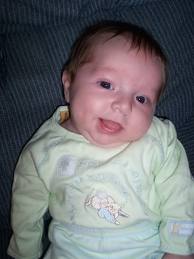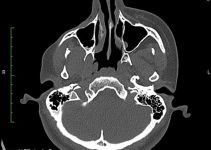Torticollis is a condition characterized by neck and head pain, stiffness of the neck muscles and more problems. Read and know all about this disease, including its symptoms, causes, diagnosis, treatment and more.
Torticollis Definition
Page Contents
- 1 Torticollis Definition
- 2 Torticollis ICD9 Code
- 3 Torticollis Incidence
- 4 Torticollis Symptoms
- 5 Torticollis Causes
- 6 Torticollis Types
- 7 Torticollis Risk Factors
- 8 Torticollis Diagnosis
- 9 Torticollis Differential Diagnosis
- 10 Torticollis Treatment
- 11 Torticollis Prognosis
- 12 Torticollis Complications
- 13 Torticollis Recovery Time
- 14 Torticollis Prevention
- 15 Torticollis Pictures
It refers to a twisted neck condition in which the head of sufferers is tipped to one side and the chin is turned to the other.
The disorder is also referred to as “Loxia” or “Wry Neck.”
Torticollis ICD9 Code
The ICD9 Code for this disease is 723.5.
Torticollis Incidence
The incidence of this disorder is calculated to be around 3 in every 10,000 individuals. Approximately 90% of all cases of Torticollis are idiopathic in nature and 10-20% are from defined factors. However, the exact incidence of the condition is unknown as the disorder has been misdiagnosed and many sufferers go undiagnosed.
Idiopathic Torticollis affects women two times more than men.
Torticollis Symptoms
The signs and symptoms of this condition include the following:
- Headache
- Neck pain
- Head tremor
- Stiffness of the neck muscles
- Limited range of motion of the head
- Shoulder that is higher on one side of the body
- Inflammation of the neck muscles (possibly present at birth)
Torticollis Causes
The condition has a genetic association. It may either be inherited, as a result of changes in the genes, or acquired – which arises due to damage to the muscles, upper spine or nervous system.
If the condition arises without a known cause, it is referred to as Idiopathic Torticollis.
Torticollis may occur in childhood or adulthood. Congenital Torticollis, which is present as a birth defect, may arise if the head of an affected baby was in an abnormal position during growth in the womb. It may also develop if the muscles are injured or the blood supply to the neck is interrupted.
Torticollis Types
The condition has been classified into different types, which are based on the basis of the positions of the neck and head such as:
Rotational Torticollis
The head of patients rotates along the longitudinal axis.
Laterocollis
The head of sufferers is tipped towards the shoulder.
Anterocollis
It is characterized by forward flexion of the neck and head.
Retrocollis
It is marked by backward hyperextension of the head and neck.
Torticollis is categorized into the following two types:
Congenital Musclar Torticollis
The cause of the disorder is unclear. It is a birth defect and an abnormal fetal position within the uterus is supposed to result in damage to the sternocleidomastoid muscle located in the neck.
Acquired Torticollis
It is also referred to as Noncongenital Muscular Torticollis and can arise due to various causes like enlarged cervical glands, cerebellar tumors or adenitis.
It is further divided into the following subtypes:
Spasmodic Torticollis
It is Torticollis characterized by recurrent but transient contraction of the neck muscles and particularly the muscles of the sternocleidomastoid.
Acquired Torticollis in Infants
As the name suggests, it is Torticollis developing in infants who spend a long time on their back on play mats or in strollers or car seats. In infants, the condition is almost always preventable.
Torticollis Risk Factors
The factors that increase susceptibility to this condition include:
Age
The onset of this disorder is most frequent in individuals aged between 30 and 50 years.
Gender
The risk of development of the disease is higher in females than males.
Gene
The condition is supposed to have a genetic association as 5% of all individuals affected by the disease report of having at least one family member with Torticollis. However, a family history of the disorder may also indicate an Inherited Generalized Dystonia.
The risk of development of this disease is also increased due to the following factors:
- Any infection
- Use of some medicines
- An injury to the neck or head
- Exposure to carbon monoxide or heavy metals
Torticollis Diagnosis
The tests to be conducted to rule out the possible causes of neck and head pain may include the following:
- MRI (Magnetic Resonance Imaging) scan of the brain
- CT scan of the neck
- Electromyogram (EMG) to check which muscles are the most damaged
X-rays may be conducted to rule out spinal abnormalities such as cervical disc disease or other underlying disorders. There are no standard laboratory exams for this disease. Doctors may also perform using contrast media and imaging techniques may be performed.
In case physicians may suspect, DNA testing may be conducted to detect particular Genetic Dystonia. They may also perform to rule out Ophthalomopathies as the probable cause.
A physical examination of sufferers may reveal the following problems:
- Shortening of the neck muscles
- Pulling and turning of the entire head to one side, in particularly acute cases
- Tilting of the head towards the affected side with the chin pointing to the opposite side
Torticollis Differential Diagnosis
During differential diagnosis, the symptoms of the condition must be distinguished from those of other disorders like:
- Epilepsy
- Tetanus
- Radiculopathy
- Anterior horn disease
- Cerebral palsy
- Myasthenia gravis
- Cervical adenitis
- Labyrinthine disease
- Parkinson disease
- Cervical osteomyelitis
- Multiple sclerosis
- Spinal cord neoplasms
- Fractures of the cervical spine
- Retropharyngeal space infection
- Conversion disorder (a mental disorder with psychogenic torticollis)
Doctors must ensure that patients are actually exhibiting the symptoms of Torticollis and not of any of the above-mentioned conditions.
Torticollis Treatment
The treatment of Congenital Torticollis (the form of the disorder present at birth) includes stretching the shortened muscle of the neck. In infants as well as very young children, passive stretching and positioning are implemented. These treatment options are often successful, particularly if they are initiated within 3 months after the birth of sufferers.
In preschool years, operative procedures may be used to correct the problems of the neck muscle. This is true for cases in which other treatment options fail to bring about an improvement in the condition of patients.
Torticollis that results from damage to the spine, muscles or the nervous system is cured by identifying the cause of the condition. The curative measures involve:
- Use of massage, application of heat or traction to the cervical spine, in order to help provide relief from neck and head pain.
- Neck braces and stretching exercises to help cure muscular spasms.
- Possible use of drugs, including the anticholinergic drug baclofen.
- Injecting Botulinum toxin (Botox) to provide possible temporary relief from Torticollis, although repeat injections are generally required after every 3 months.
- Spinal surgery, which might be needed in cases where the condition arises as a result of a dislocated vertebrae. In certain sufferers, operation involves brain stimulation or destruction of some of the nerves in the neck muscles.
Torticollis and Medicines
The medications that are useful for curing or managing the signs and symptoms of the disease include:
Paracetamol
Full-strength painkillers are often enough in curing the disease. Two 500 mg tablets, administered for four times every day, are recommended for adult sufferers.
Anti-inflammatory painkillers
These include over-the-counter (OTC) drugs like Ibuprofen, or prescription medicines such as Naproxen or Diclofenac that can be used alone or along with Paracetamol. However, certain patients find these more effective than Paracetamol.
These types of medications may not be suitable for people suffering from health problems like:
- Kidney failure
- High blood pressure
- Heart failure
- Asthma
- Stomach ulcers
Painkillers
Strong painkillers like Codeine are a curative option if anti-inflammatory medications are not that effective or suitable. However, consumption of Codeine commonly gives rise to the side-effect of constipation. This can be prevented by the consumption of plenty of fluids or foods rich in fiber.
Muscle relaxants
Diazepam and other muscle relaxants are occasionally prescribed for a few days in cases where the stiffness in the neck muscles is acute in form.
Torticollis – Alternative Treatment
Alternative treatment options for this disorder may include:
Heat packs
Application of heat packs can help provide relief from stiffness in the affected muscles in some sufferers.
Firm support
A firm support in the form of a pillow at the time of sitting or sleeping can also help the affected region and prevent worsening of the condition.
Proper posture
Correct posture can help patients suffering from head or neck pain arising due to this condition. Sitting upright, not with a stooped back or head flexed forward, can help prevent further deterioration of the disease.
Exercises
Exercises such as pilates, Yoga or Alexander technique can improve the posture of the neck. However, the actual worthiness of these workouts in curing neck pain is uncertain.
Torticollis Prognosis
With proper medical treatment, the condition has a good outcome. The signs and symptoms often improve within one to two days. However, the problems may take up to a week to resolve completely. The symptoms occasionally persist longer or recur at a later time without any apparent reason.
The disease may be easier to cure in infants and in children. If the disorder turns chronic in nature, patients may experience tingling and numbness as a result of pressure on the nerve roots located in the neck. The muscle itself may get enlarged and become hypertrophic as a result of exercise and persistent stimulation.
In the majority of cases, the condition may persist for a lifetime and can lead to postural deformity and limited movement. Following operation, the mobility of the neck may not fully return to normal. Some patients may suffer from numbness on the rear section of the head extending to the top.
Torticollis Complications
The complications associated with this disorder may include inflammation of muscles due to continuous tension or symptoms of nervous system problems as a result of pressure on the roots of nerve. Long-term changes in the posture of the neck and head can also result in Scoliosis or Spinal Stenosis and/or spinal radiculopathies.
Torticollis Recovery Time
Work restrictions for affected individuals may be based on the acuteness of the disease, manifested by problems like limited range of motion. Patients may need to eliminate or reduce operating heavy machinery, driving any other tasks that involve the motions of the head and neck.
Torticollis Prevention
There is no specific way to prevent the development of this disorder. However, early treatment may prevent a worsening of the condition.
Torticollis Pictures
The following images show the physical appearance of patients of this disorder.
Picture 1 – Torticollis
Picture 2 – Torticollis Image
If you suspect yourself, or a friend or a family member, to be having this disorder and the symptoms do not show any improvement you should get in touch with a medical care provider and seek early diagnosis and treatment. Torticollis that arises after an illness or injury may be acute in nature. Due to this reason, it is best to seek medical treatment on an early basis.
References:
http://www.nlm.nih.gov/medlineplus/ency/article/000749.htm
http://www.mdguidelines.com/torticollis
http://en.wikipedia.org/wiki/Torticollis
http://www.patient.co.uk/health/Torticollis.htm




I just found out last night in the Emergency Room here in Fairfield, CA North bay.. I have been taking coginon and flexile by my doctors. along with my out pain meds nothing worked in two years till last last when a when a doctor prescribe me what I needed.. One doctor told me it was because I as taking Abiilfy my depression, another said pinch never, primary doctor attribute it to.. Been sent to two Chiropractor which made my situation worse. that my doctor referral me to.
Question ?, I set up appoint meant with my doctors. Physical & mental health.. how due I proceed with caution . It may have been a simple mistake our lack of communication. I do not know.
Advice is welcome?